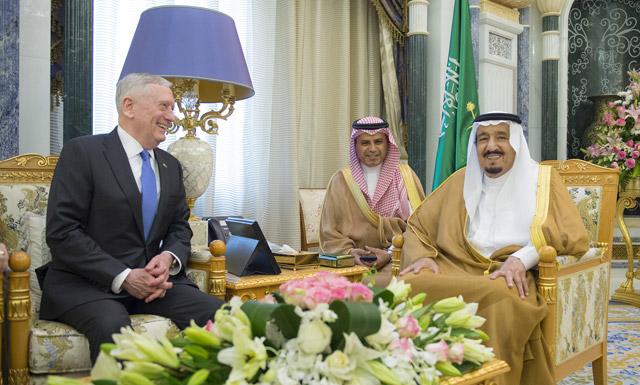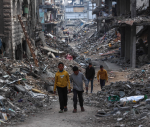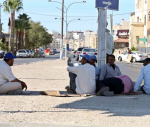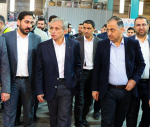You are here
In Yemen conflict, a window into deepening US-Gulf ties
By Reuters - Apr 29,2017 - Last updated at Apr 29,2017
WASHINGTON — When US Defence Secretary Jim Mattis greeted Saudi Arabia’s foreign minister at the Pentagon last month, the first thing he did was joke about the time “the Iranians tried to murder you”.
Mattis’ reference to a foiled 2011 plot, denied by Iran, was a telling sign of how much more aligned President Donald Trump’s administration is with Gulf allies about what they perceive to be the Iranian threat, a shift that seems to be setting the stage for greater US involvement in Yemen, in particular.
After long seeking to distance itself from Yemen’s brutal civil war, the United States under Trump now appears increasingly to see the conflict through the Gulf’s prism of Iranian meddling, even as Washington prioritises a parallel fight against al Qaeda.
Detailed discussions are under way within the Trump administration that would offer greater aid to Gulf allies fighting Iran-aligned Houthi rebels. Officials say that could included expanded sharing of US intelligence.
In Saudi Arabia last week, Mattis compared Tehran’s backing for the Houthis to its support for Shiite ally Lebanese Hizbollah, a view long espoused by Saudi Arabia and other Gulf states who see links between the two groups.
“Everywhere you look, if there is trouble in the region, you find Iran,” Mattis told reporters in Riyadh.
Iran rejects Saudi accusations that it is giving financial and military support to the Houthis in the struggle for Yemen.
Cooperation between the United States and the Gulf is already on the rise in the fight against America’s top priority there: Al Qaeda in the Arabian Peninsula.
US officials see that broader civil war as an obstacle to a sustained military campaign against the militants, as well as a threat to the Bab Al Mandab Strait, a strategic waterway.
Iran muscles into Yemen
For many US and Gulf observers, the role of Iran is clear in the increasing sophistication of Houthi forces.
The United States launched cruise missiles at Houthi targets last year after a US warship came under fire off Yemen, and a remote-controlled boat laden with explosives rammed a Saudi frigate on Jan. 30, the first known strike by a “drone” vessel.
“These weapons didn’t exist ... before the war. There was no explosive boat that existed in the Yemeni inventory,” Vice Admiral Kevin Donegan told Reuters in an interview.
Donegan, commander of US Naval Forces Central Command, also said ballistic missiles fired into Saudi Arabia had several times the range of missiles the Yemenis had before the conflict.
“When you have a non-nation-state with nation-state-like weapons that can reach into the maritime [area], it has my attention,” Donegan said.
A senior UAE official also compared the Houthis to Hizbollah, and said growing Iranian support had helped shield them from pressure to enter political talks.
“We are seeing UAVs, anti-tank and anti-ship missiles, as well as land and sea mines,” the official told Reuters.
Mattis has publicly backed a political solution to the conflict. But US officials have also acknowledged that Saudi-led coalition military pressure could help create the conditions for that negotiated solution.
Still, the Yemeni government and the Gulf-led coalition have been preparing for a possible assault on Hodeidah port, the entry point for nearly 80 percent of Yemen’s food imports, because they say the Houthis use it to smuggle weapons and ammunition.
The Yemeni government has proposed to the United Nations that it monitor Hodeidah.
Trump administration officials have not ruled out US assistance should the coalition move ahead, but US officials said Washington is not considering strikes on Houthi targets or deploying ground forces.
Eric Pelofsky, who helped craft Yemen policy for Obama, warned an assault risks tipping Yemen into a terrible famine and has proposed that coalition forces perhaps instead strengthen their offensive near Kitaf to increase pressure on the Houthis.
The United States has carried out more air strikes this year in Yemen than in all of 2016, in a clear sign of growing US concern and focus on Al Qaeda in Arab Peninsula and deepening involvement in Yemen.
Largely unseen, however, is the partnership with the United Arab Emirates that is helping guide that increased activity.
UAE-backed forces have captured Al Qaeda operatives, and while a January raid in Yemen was Trump’s first and so far only one since he took office, the UAE-trained local Yemeni forces have carried out more than 250 raids in and around Aden, a senior coalition military commander told Reuters.
The port of Mukallah was similarly retaken last year with 10,000 troops, largely Yemenis trained by the coalition.
“We are encouraged by US support and the change from a drone policy to greater engagement. We can’t really defeat and dislodge Al Qaeda with a drone policy,” the senior UAE official said.
Intelligence gleaned from the UAE-backed operations has been shared with the United States, which is rebuilding its knowledge about the group since the war forced the pullout of its personnel in 2015.
“In terms of the US supporting us or the coalition supporting the US, it’s really mutual,” the senior coalition military commander said, adding that the coalition has strong human intelligence, complemented by Washington’s strong intelligence, surveillance and reconnaissance abilities.
Related Articles
ADEN — A US drone strike in central Yemen killed two suspected Al Qaeda members on a motorbike including a local commander, a security offic
RIYADH — The United States wants to see a strong Saudi Arabia, Defence Secretary Jim Mattis said during talks Wednesday aimed at reinvigorat
ADEN — Saudi Arabia has deployed more troops in southern Yemen to try to contain clashes between nominal allies in the Saudi-led military co


















